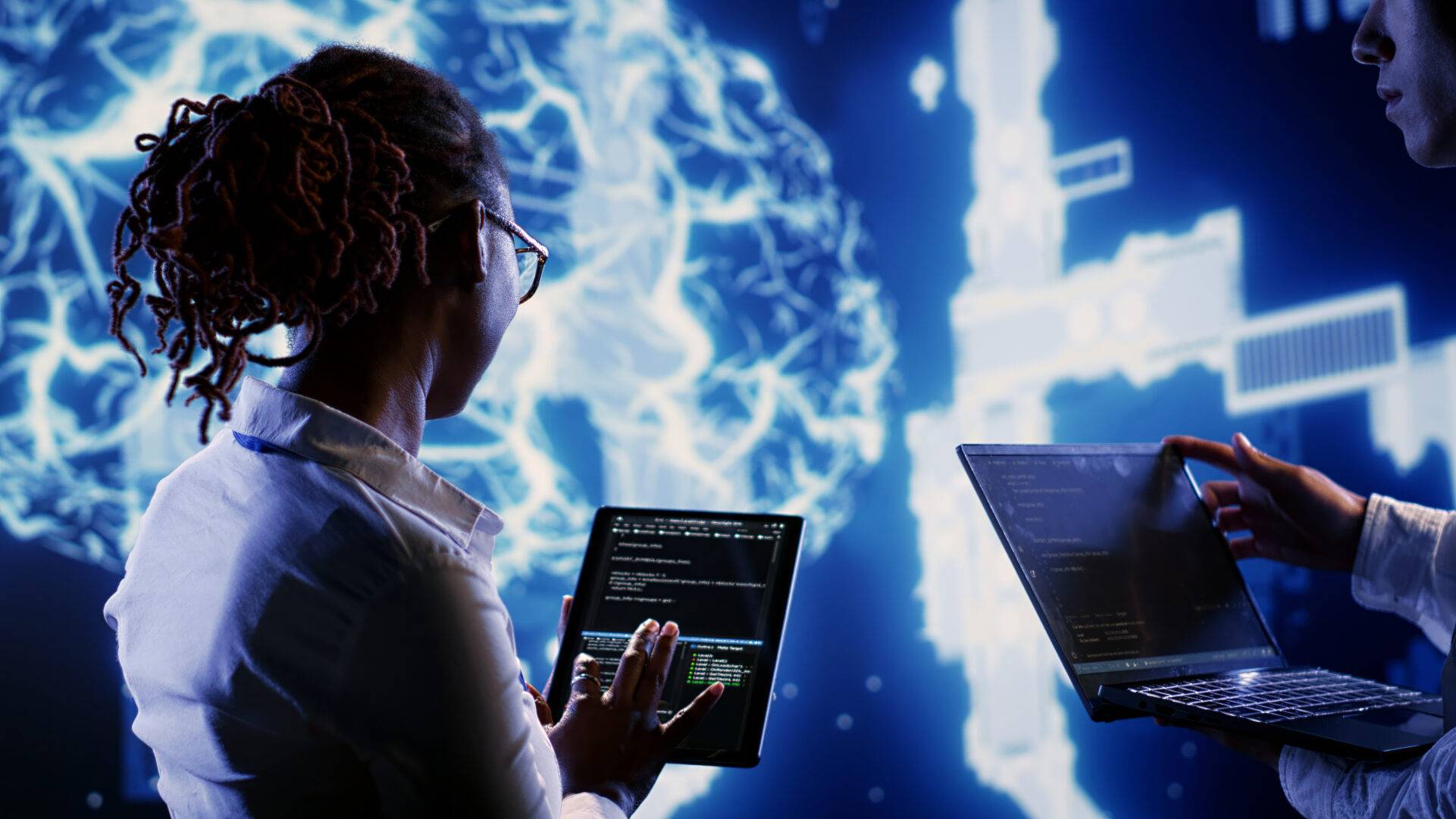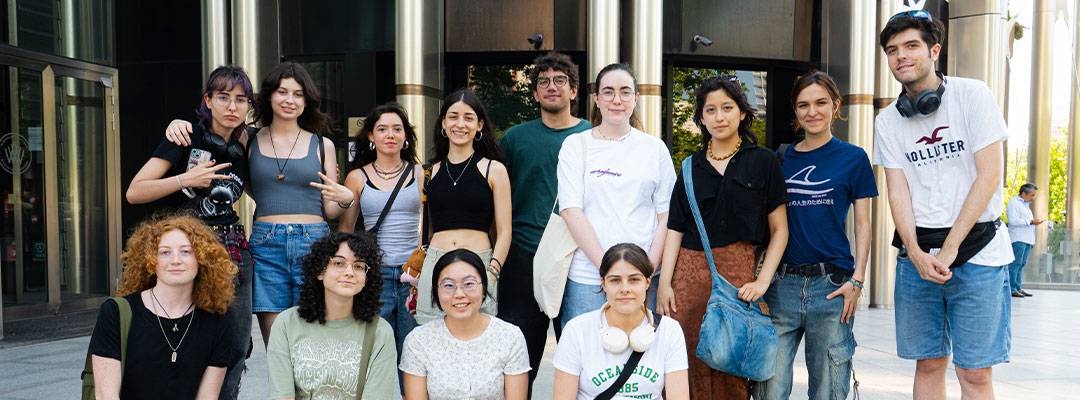Neural networks: the brain of artificial intelligence
How do machines learn, and how have we managed to enable what is literally a "mountain of iron" to express itself in what is apparently a "voice of its own"? And furthermore... how are they able to recognise patterns, distinguish images, anticipate behaviour or predict financial outcomes?
The answer to many of these questions lies in the development of what are known as neural networks: mathematical and statistical models that are at the basis of artificial intelligence and that can be as basic as mimicking the behaviour of a single neuron, or as complex as building large architectures capable of generating text, images or music.
In this article we analyse how the main neural networks work, how they learn and in which fields they are being applied.
Perceptron and feedforward neural networks (FFNNs)
Artificial neural networks are inspired by the way the human brain works, and although their structure is much simpler, they are capable of learning from data. It all started with a very simple model called the Perceptron, developed in the 1950s.
This model tried to mimic a basic neuron: it receives various inputs (e.g. numerical values), combines them, and generates an output. It may seem modest, but it was the first step towards what we know today as artificial intelligence. For example, a perceptron could learn to distinguish between spam and non-spam emails based on the presence of certain keywords.
From this initial idea, Feedforward Neural Networks were born , which work by connecting many "neurons" like the perceptron, organised in layers. Information always flows in a single direction (from input to output) without feedback. These networks can solve much more complex problems: from recognising faces in images to predicting prices or recommending songs. They are trained by a process that adjusts their internal connections to get more and more of them "right". Although we don't see how they think, these networks learn to recognise patterns with surprising efficiency.
Convolutional Networks (CNN)
Imagine we want to teach a machine to recognise an article of clothing in a photograph: a T-shirt, a dress or a jacket. For humans, this is automatic, but for a machine, interpreting and recognising what is in an image pixel by pixel can be a daunting task.
This is where Convolutional Neural Networks (CNNs), an architecture specialised in understanding images, come into play. What they do is to examine the image in parts (from the general to the particular), as if they were small magnifying glasses that move around the photo. In each area, they look for details such as lines, corners or colour differences. This operation is called convolution, and it allows the network to learn to identify more complex shapes and structures as multiple layers are combined. By piecing all this information together, the network forms a general idea of what is in the image.
Thanks to this ability to "see", CNNs have revolutionised fields such as medicine (in the analysis of X-rays), security (facial recognition) or design (classification of visual styles or image generation).
Recurrent Neural Networks (RNNs) and LSTMs
Recurrent Neural Networks (RNN) are designed to work with information that has an order or sequence, such as a phrase, a song or the data that an application works with over time. Unlike networks that analyse everything at once (such as CNNs with images), RNNs process data step by step, remembering what they have seen before to understand what comes next. For example, if we read the sentence "tomorrow it will rain in...", we are likely to guess that the next word will be a city. RNNs do something similar: they use what they have already learned to predict what comes next.
However, basic RNNs have limitations: they tend to forget what happened at the beginning of a long sequence. To overcome this, improved versions such as LSTMs (Long Short-Term Memory) were developed , which are able to "remember" relevant information for longer and "forget" what is not needed. Thanks to them, it is possible to train systems capable of translating texts, generating music, recognising speech patterns (they are essential for the functioning of Alexa or Siri, for example) or even predicting certain human behaviours.
Transformers
In recent years, Transformers have become the star architecture of artificial intelligence, especially in language-related tasks. Unlike recurrent neural networks, transformers do not process data word by word in order, but can analyse the whole sequence at once, understanding the relationships between words no matter how far apart they are.
This makes it possible to capture context much more accurately. For example, if you read "The bank was full of fish", a traditional model might get confused, but a Transformer can deduce that "bank" refers to the bottom of the sea and not a financial institution, thanks to the full context.
Thanks to this ability, Transformers power tools such as automatic translators, typing assistants, text generators, intelligent search engines, etc. They are also the basis for advanced models such as ChatGPT or Google Gemini.
Generative networks (GANs, VAEs)
Along with transformers, another of the branches that have received the most attention in recent years are generative networks: models capable not only of analysing data, but also of creating new content from it.
Within this field, two types of very powerful networks stand out: GANs and VAEs. Both GANs and VAEs learn to generate new content by training with large amounts of real examples (such as images, sounds or texts). In the case of GANs, the process is based on two networks working in opposition: a generator network creates fake content and a discriminator network evaluates whether that content is similar enough to the real thing. As they train each other, the generator learns to fool the discriminator better and better, leading to increasingly realistic results.
In contrast, VAEs work by compressing the original information into a simpler version (a kind of mathematical summary) and then reconstructing it. This allows them to understand and manipulate the internal characteristics of the content, as if they can move "sliders" that control the size, colour or shape of what they generate. This more structured approach makes it easier to explore variations and create new versions of the same basic idea.
Understanding how neural networks work not only allows us to appreciate the enormous potential of this technology, but also to imagine new applications in sectors as diverse as health, art, education and design.
For those who want to go beyond curiosity and start building AI-based solutions, UDIT's Master's in Artificial Intelligence offers practical and specialised training that connects technical knowledge with creativity, preparing the professionals who will lead the challenges of tomorrow.





